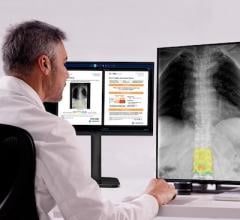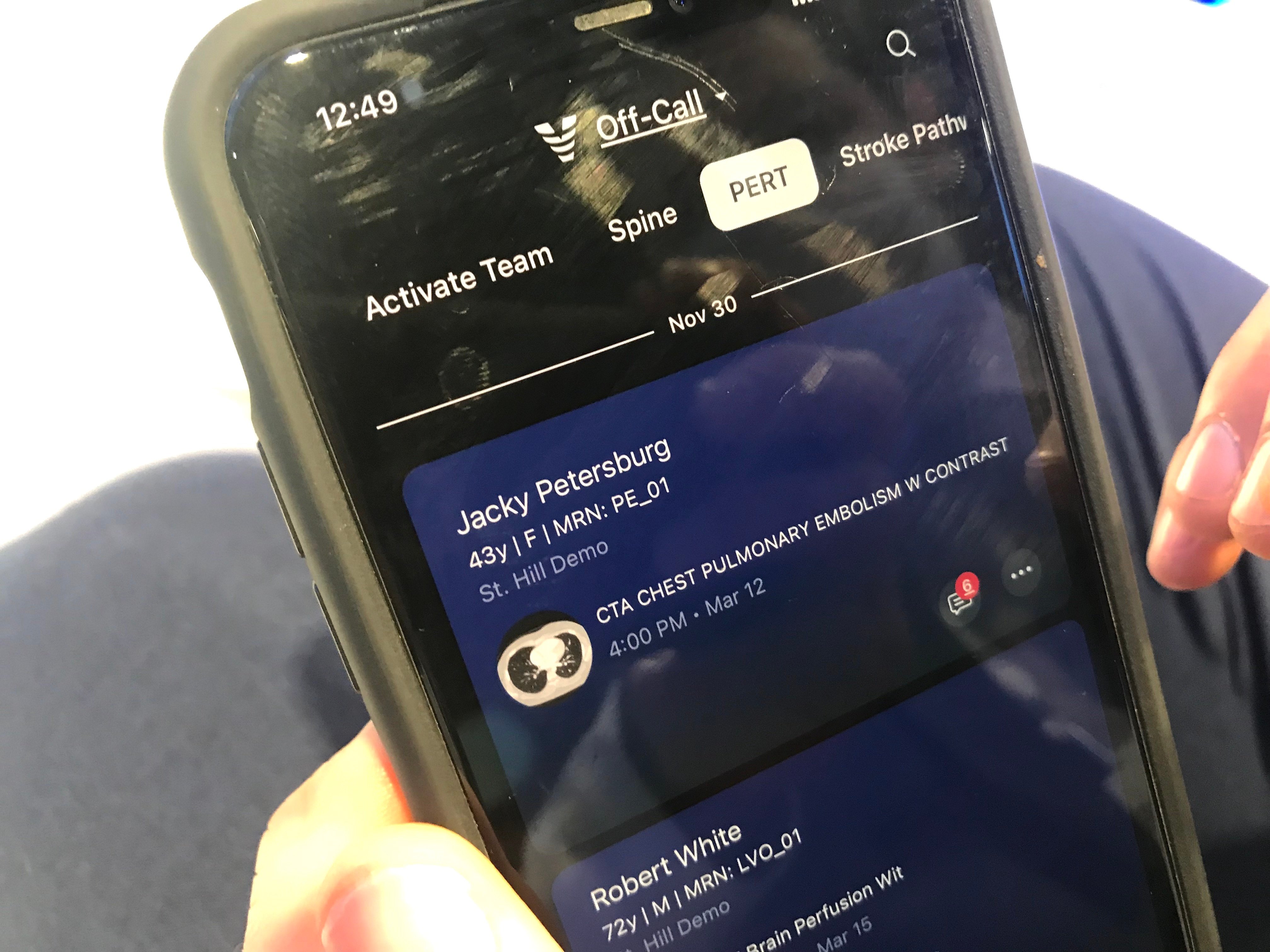
Artificial intelligence (AI) has found a unique niche to help automate the activation of acute care teams for pulmonary embolism (PE), aortic dissections and abdominal aortic aneurysms (AAA) and allow them access to imaging and immediate communications. This concept was highlighted at the 2019 Radiological Society of North America (RSNA) meeting for stroke care, but AI vendors at RSNA 2021 are now rapidly moving into other areas where there is a need for fast acute care team activation. This was one of the key AI takeaway trends at this year's meeting.
In cardiology 30 years ago, cath labs became popular and percutaneous revascularization rapidly replaced thrombolytics as the front-line therapy for ST-elevated myocardial infarction (STEMI) heart attacks. STEMI care teams were created and manually alerted by a pager or cell phone call to all the team members for faster cath lab activation. The goal was, and still is, to get the blocked coronary vessel opened by an angioplasty balloon within 90 minutes to prevent permanent damage to the heart.
That same concept is now becoming mainstream with stroke with centers that have neuro-interventional cath labs, where a catheter-based thrombectomy can be performed. This interventional approach is now becoming a frontline treatment for stroke and replacing thrombolytic therapy where there is access to such care. The same is true in PE care, where thrombectomy is becoming the preferred therapy.
But, while STEMI team activation is still largely driven by ECG results, stroke and other acute conditions like PE, aortic dissections and AAA are driven by computed tomography (CT) imaging. This requires an immediate STAT read by a radiologist to confirm these conditions. However, there are now several AI algorithms trained to identify these conditions and automatically perform a first pass read as it leaves the scanner. The AI can flag these studies for the radiologist and alert the acute care team with no human intervention and before the exam is sent to PACS. Some of the AI systems also can red flag the exam in the PACS and place it at the top of radiologists' reading lists for a STAT read.
This type of image-driven workflow also may become more relevant to cardiology as increasing numbers of chest pain patients are now being scanned on emergency room CT systems. CT for chest pain is expected to see a jump with the new 2021 chest pain imaging guidelines from the American College of Cardiology (ACC) and endorsed by numerous cardiac imaging societies that now places CT as a frontline choice for rapid imaging assessments.
There has been growing interest by hospitals over the past several years to create pulmonary embolism response teams (PERT). AI technology like this can help streamline how these teams are activated and communicate.
Two vendors on the RSNA 2021 expo floor, Aidoc and Viz.AI, demonstrated their new pulmonary embolism AI alert systems. They did not have a shortage of radiologists and hospital executives coming to see them.
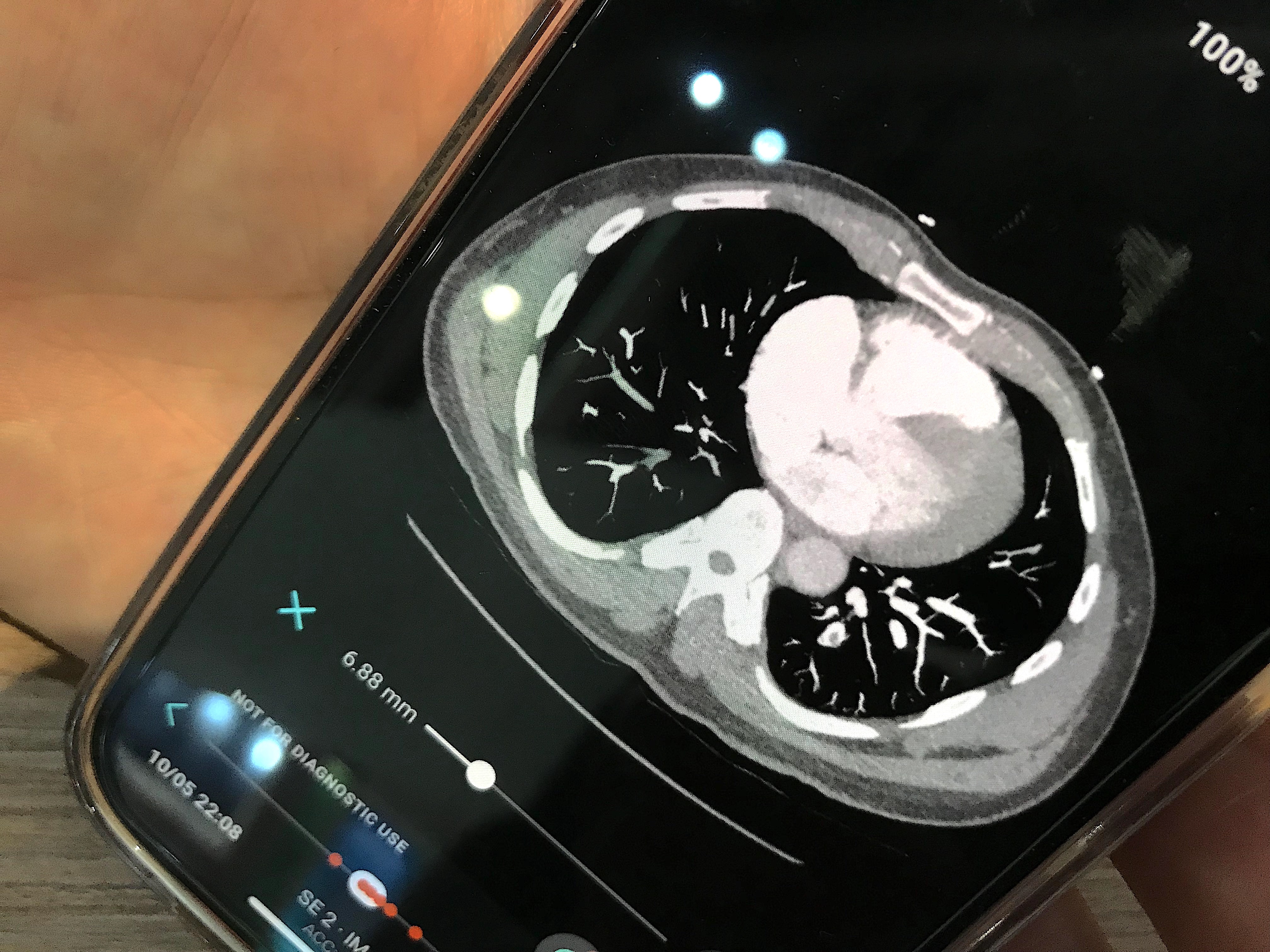
Aidoc's artificial intelligence PERT activation app showing how the CT scan can be viewed on a smartphone. The orange dots at the bottom of the page mark key slices were the radiologist detected pulmonary embolism. Photo by Dave Fornell
AI Vendors Finding New Ways to Address Acute Care Bottlenecks
"Vendors are looking for new ways to deliver AI to the customer that helps address some of the challenges they face with integration and deployment," explained Sanjay Parekh, Ph.D., Signify Research senior market analyst who monitors trends in radiology AI. "One of the evolutions we have seen for that is in acute care coordination packages. Viz.AI has done this very well with its stroke imaging AI platform. I have seen several examples of this on the RSNA floor, but now vendors are going down that route for not only stroke, but also pulmonary embolism."
Parekh said the AI application in this scenario takes out the possibilities in delayed human response and can get the people who need to be involved in an emergency on the same page and able to see the same imaging and patient data immediately and in real time.
"This type of care coordination helps us think beyond radiology. You have an AI imaging analysis component, but for these types of conditions there is a very short turn around that is needed and these types of solutions help address the need to get faster treatment to the patient, get better outcomes for the patient, and it helps make it more cost-effective for the hospital," he said.
How PERT AI Alert Systems Work
Parekh said the reason there is so much interest in these new alert apps is because AI vendors are going beyond just flagging exams with AI image analysis. These apps also include the AI pulling in relevant patient data, reports, labs and the imaging, packaging this together and delivering it on clinician's smartphones or mobile tablet devices. This eliminates the need for team members to find a workstation and allows immediate access to everything the team needs to make a fast diagnosis and treatment decision. The app also puts the entire team in one location to share information and messages.
Both the Aidoc and Viz.AI systems have similar functionality. The AI reviews imaging exams for possible stroke or PE, and if any potential diagnosis is found, it automatically sends an alert through the app to all the care team members. This alert includes the patient information and a link to the CT dataset. The user can open the CT scan and scroll through the slices, window and level, and have access to some other basic image manipulation tools. They can share key images with the team. The radiologist is able to make a diagnosis from the scan and tell the team if this is a full activation for the cath lab, or explain the severity of the case to the team so they can discuss other treatment options.
The Aidoc system has the addition of orange dots placed at the bottom of the screen, flagging areas where the radiologist confirmed the AI-detected pulmonary clots. This can help speed treatment by directing the care team’s attention immediately to key images in the dataset.
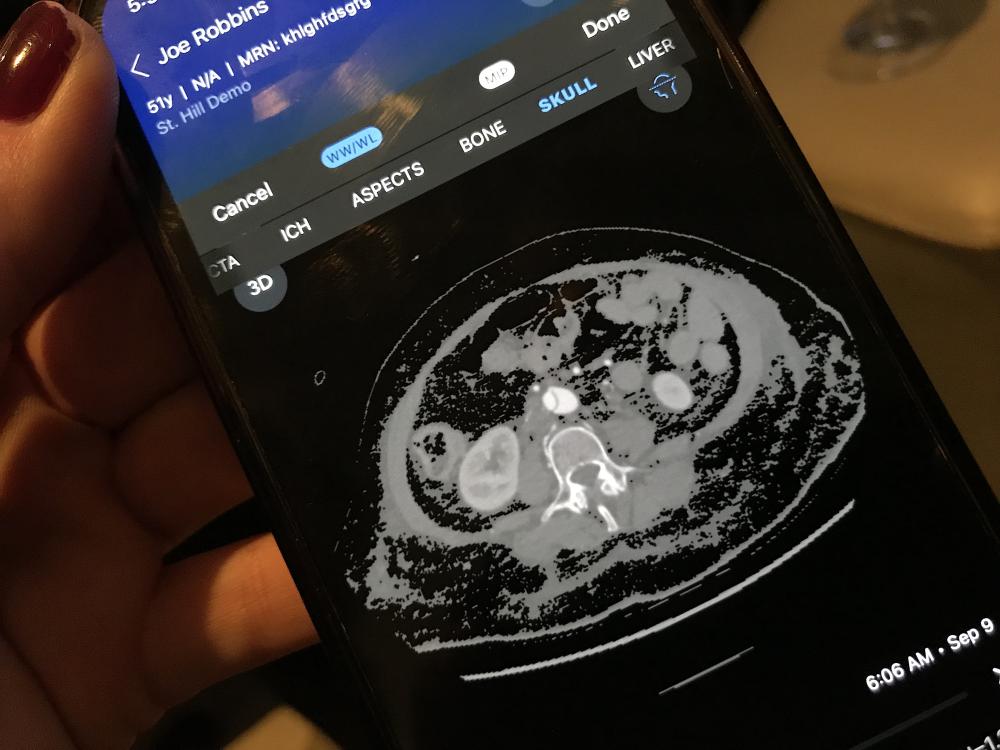
Viz.AI showed an example of an aortic dissection care team alert system, and pulled up CT cases on cell phones to show the CT images that would initiate an alert. The vendor also said it plans to roll out additional AI-driven care team modules for AAA and acute heart failure. The company current has FDA for ischemic stroke, intracranial hemorrhage, subdural hematoma and is FDA pending for brain aneurysm. They are also FDA cleared for PE and aortic dissection type A and B. A work-in-progress is AAA. All of these care team apps will be offered on the same platform and users can toggle between them. Viz.AI currently has installs in 900 hospitals worldwide.
Aidoc was among the first FDA approvals for stroke AI detection software in 2017. The vendor said it developed the PE teams app to address what it sees as an unmet clinical need. The company said only about 25% of PEs diagnoses lead to a PERT activation, mainly due to poor coordination and communication. Aidoc is also working on AI workflows for AAA, deep vein thrombosis (DVT) and aortic dissection.
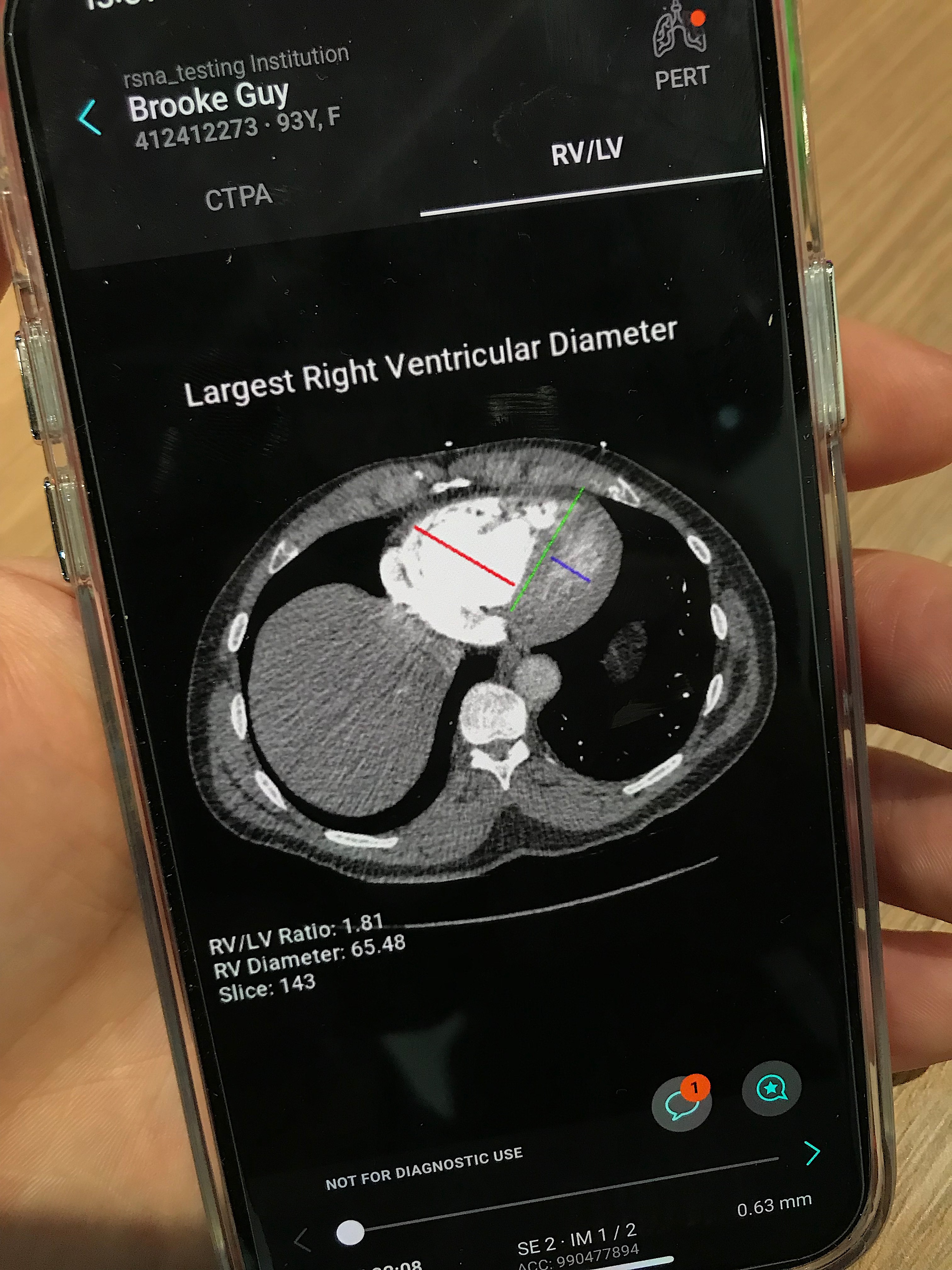
The Aidoc PERT app also includes AI from partner Imbio for automated right and left ventricle (RV/LV) diameter ratio assessments from the CT scan. This is an added predictor tool for short-term mortality and adverse clinical events in patients with various pulmonary vascular diseases.
Related AI Content From RSNA 2021:
Viz.ai Launches Two New AI-Powered Modules for Pulmonary Embolism and Aortic Disease
VIDEO: Artificial Intelligence Trends in Medical Imaging — Interview with Sanjay Parekh, Ph.D.
GE Healthcare Receives FDA Clearance for First X-ray AI to Help Assess Endotracheal Tube Placement
RSNA Announces Results of Brain Tumor AI Challenge
AI Gut-imaging Software Takes on the U.S. with FDA Clearance and National Hospital Partnership
VIDA Streamlines Respiratory Clinical Trials With AI
Sirona Medical Announces Launch of Its RadOS Platform at RSNA 2021
Mount Sinai Study Validates DiA's Cardiac Ultrasound AI Algorithm
AI-LAB Federated Learning: A Leap Forward for Radiology AI Development
Agfa HealthCare Showcases a Suite of Technology Innovations at RSNA21
Carestream Showcases Artificial Intelligence Innovation at RSNA 2021
Samsung Receives FDA Clearance for AI Algorithms that Detect Lung Nodules in Chest X-rays


 December 24, 2025
December 24, 2025 








